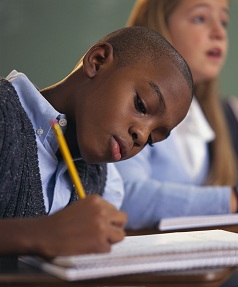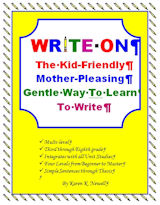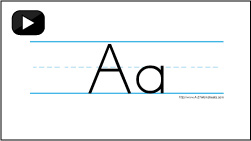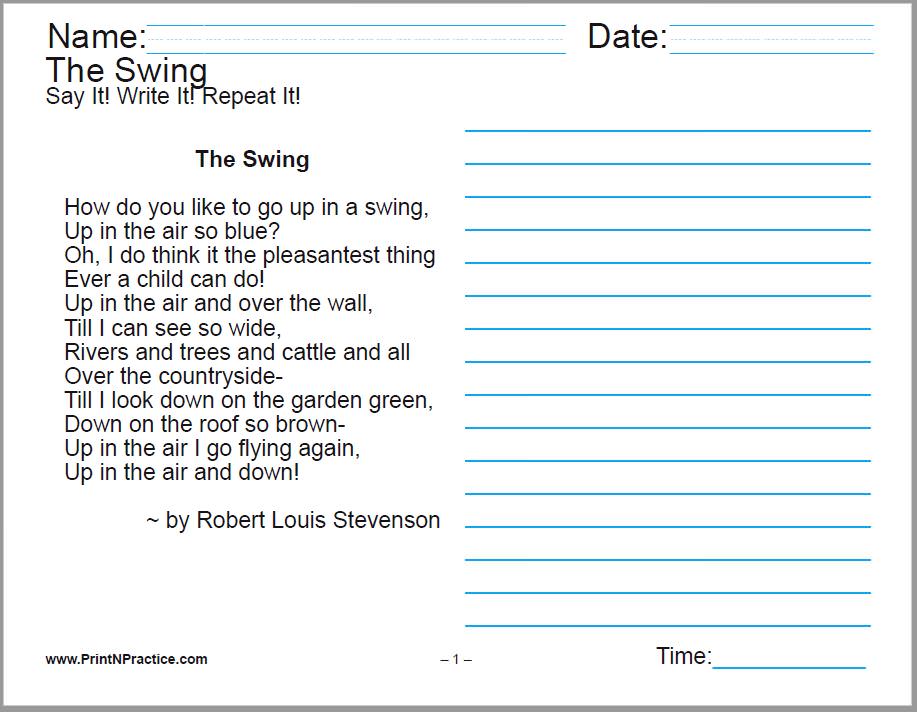Creative Writing Ideas
Karen Newell's Printable Write On Ebook
One of the most interesting, and short, books on creative writing ideas for kids is Write On, by Karen Newell. Her Write On is a concise and structured guidebook for all twelve grades.
Skim the first part for little ones, and use it over again in depth for older students. I love her thorough and professional manner and her cozy style! For more more writing ideas see her Write On.
Creative Writing Example
"She was sitting at her desk late Sunday afternoon, poised to write only 75-100 words for a weekly seventh grade English essay." for over three hours?! Agony!
This describes one of my children who is also one of my best students. She had had an easy time of learning Math, Reading, Writing and even Music. Without being explicitly taught, she knew how to spell the word sweater at six years old. How? Much reading.
Good reading is excellent preparation for writing and grammar skills. If I myself hadn't witnessed her writing agony during seventh grade, I'd never believe the report. She, of all my children, had had all the tools and talent for writing well. She was certainly able to write a short essay within the time of one afternoon. So. Why the block?
Who knows? Fear? Teacher? Time? None of the above.
She simply hadn't been built up to writing regularly on her own. The creative writing prompts had always been given to her.
Spelling class? "Write sentences using these twenty words."
History essay? "Write about this given character in history." You get the idea.
The topic or direction was missing in this particular class during that particular year so she had to rely on her own wits for the first time. She had not formed the habit of creating her own writing ideas and I had had no idea how to help her through that step.
Using Creative Writing Prompts
Many of us can identify. What, simply, does it take to find creative writing ideas and bring them to life?
Easy Creative Writing Ideas

In my opinion, the easiest way to start is to write about topics that are familiar especially in a homeschool writing program. Small children can tell mother or father an idea of what they saw in the yard yesterday, what their favorite animal looks like or does, or what they hope to do the next day, etc.
If Mom or Dad writes the ideas that the children say, the children can then copy their own words to their own pages. Many children love this! I think that it is one of the best creative writing ideas for children. It takes the pressure from the effort of writing and produces a more satisfactory result faster. Karen Newell develops this idea nicely.
Another great plan that teaches a child to find his own creative writing ideas comes from a single homeschooling widower who was also a PhD in engineering, Dr. Art Robinson. He said that he had asked his children to read for a certain time and then write for half again as long from what they had read, the time depended on the age and aptitude of the child.
During the early years he had the children simply read and copy a paragraph or so. Later they moved to commenting on what they'd read; the spelling and main words were all in the reading selection. This is a winning idea in our home for our faster students as well as our slower students which in itself seems to me to be a mark of a good idea in education. Finding the time for planning this into your homeschool writing program is the rest of the trick.
Develop A Habbit Of Writing

Making a habit of writing applies even when we're older. My uncle gave me the best advice when I'd returned to college. He'd had to do the same in his youth. He said to set up your study space and sit there. Increase the time. Write. Read. Write anything, especially letters to home. That really helped me with creative writing ideas in college.
Writing thank you notes was the easiest for me. Answering letters others had sent was easy because I then had their queries to answer or develop.
Increase the time again and again until you're able to sit for a long time reading and writing. I am so glad that I took his advice those first weeks back in school. Those first letters trained me to think about what I wanted to convey and how to be disciplined enough to send a nice letter in good time.
I think that this has been a factor in my having the little ones copy their writing. It sure keeps the children fresh with several skills like reading and penmanship. This also moves the children beyond what is familiar to them and introduces them to other material for creative writing ideas.
Develop Good Writing Habits
Even simply copying their prayers or the Pledge of Allegiance can be a good exercise for the children who are timid writers. Simply the physical act of writing can help maintain and improve writing skills.
It's called practice. The more we practice an art the more facility we have with it. Karen's Write On is chock full of good ideas for finding creative writing ideas.

Unless spontaneous ideas jump from the paper, most of us have to research a bit; even if it means simply remembering events in our own lives. Finding the main thought is often a real chore if we aren't used to writing from what is already familiar to us.
Small children learn to write very well by copying what they are taught. As they get older, topics are given upon which to write. Perhaps we don't allow or require enough time along the way for our students to grapple with the effort necessary to develop an idea. I love how Karen guides her students through this very element.
A bit of time management gives structure. It helps to guide early writers through different choices and it keeps us older students concise. A few books laid out for perusal helps jiggle new ideas. A newspaper or variety magazine can inspire ideas. They make excellent creative writing picture prompts.
Best of all is a guided tour of the back yard! You can point out the interesting or beautiful aspects of the yard and ask what the child thinks of them. If it's not a beautiful yard there are always points of interest such as:
- Why is there a crack in the sidewalk?
- Why is the threshold to the door above the porch floor?
- What is the cat's name?
Most important, I think, is to start out small and repeat frequently. A list of interrogatory pronouns is very helpful.
Help And Encourage Young Writers

If young children cannot yet write about their own ideas, as I mentioned above, I have seen great success with parents who ask their children simply to narrate their thoughts to them while they write the words for the children to recopy. This is also an awesome way to help children find an interest in the correct spelling of words and sentence construction.
Does this seem too much to do all at once? I've seen a home school curriculum that suggests writing the essay through the whole school week.
- Monday - Draft ideas;
- Tuesday - add related new ideas, adjectives, and adverbs;
- Wednesday - read it out loud and proof it for errors;
- Thursday - rewrite it in final form;
- Friday - finish or add related artwork.
Monday and Tuesday would be the days to dream up creative writing ideas and the rest of the week would be spent polishing the work. Or? Getting finished early and having the day off!
Simply increase the time or content to advance through the years. There are many times when my older children will tell me all about their research paper during lunch. They are thrilled when I say, "That's a great intro to your paper, go write it down." Some authors call this narration and I think that it is a great idea jiggler for both younger students and older students.
If we as teachers and parents can form our own habit of encouraging creative writing ideas when we see the opportunity, whether we start early or catch up later, subsequent efforts will be easier and the child will have writing skills that many adults do not enjoy. Let's learn to listen and watch for those moments. They're part of what keeps us close to our children.
More? Karen's Write On has a great system for stretching one's concept of what to write and how to write creatively. Enjoy!

Mary Fifer, BSBA is webmaster, author, and researcher at PrintNPractice.com. She has created elementary school practice exercises using printable or digital interactive worksheets. Perfect for today's teachers, tutors, homeschoolers, and students!







